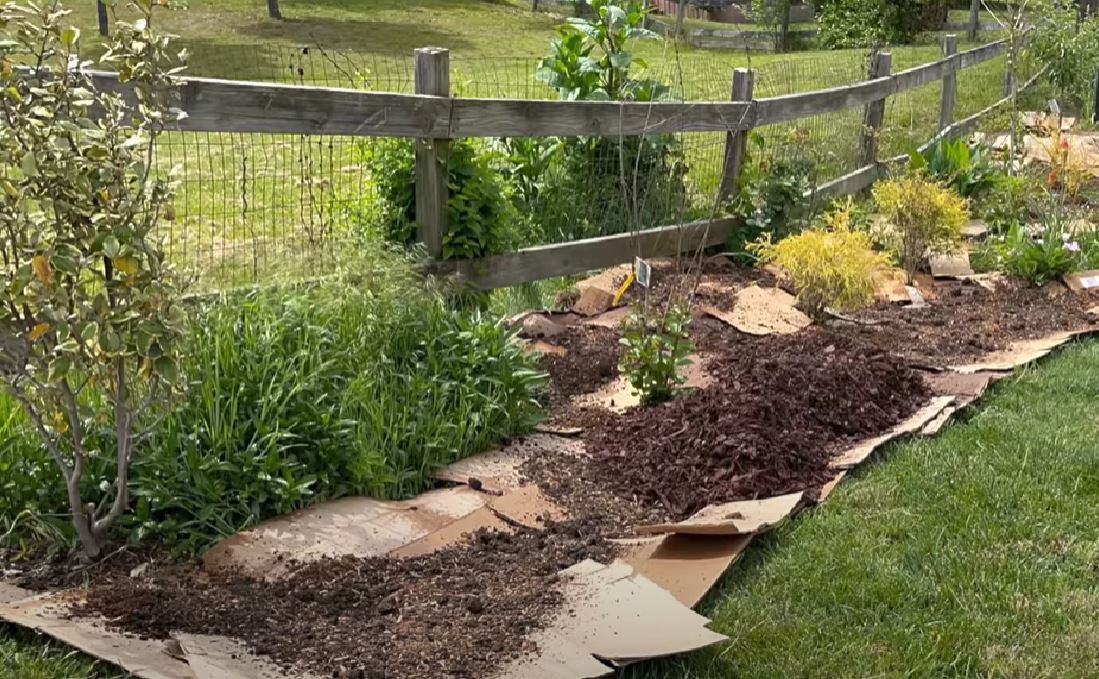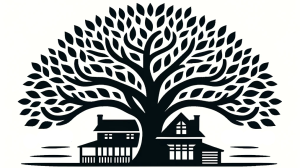The Cardboard Manifesto: Rethinking Urban Landscaping
In an era where sustainability has become more than just a buzzword, urban gardeners and landscapers are turning to unconventional methods to maintain the green spaces that breathe life into our cities. One such method, gaining traction for its simplicity and effectiveness, is using cardboard to smother grass around trees. This technique, while seemingly mundane, is revolutionizing the way we approach urban landscaping, offering a cost-effective and eco-friendly solution to a long-standing problem.

The principle behind this method is straightforward: by covering the grass around a tree with cardboard, you cut off its access to sunlight, effectively killing it over time. This not only reduces competition for water and nutrients, allowing the tree to thrive, but also contributes to the overall health of the soil. As the cardboard decomposes, it adds organic matter to the soil, improving its structure and fertility.
The Problem with Traditional Landscaping Methods
For years, urban landscapers have grappled with the challenge of maintaining the delicate balance between aesthetics and sustainability. Traditional methods often involve the heavy use of chemicals, such as herbicides, to control grass and weed growth around trees. While effective in the short term, these chemicals can leach into the soil and groundwater, causing long-term environmental damage. Moreover, they pose significant health risks to the people and animals that frequent these urban green spaces.
The cardboard method, in contrast, offers a natural, chemical-free alternative. It’s a solution that works with nature rather than against it, harnessing the power of decomposition to nourish the soil and support healthy tree growth. In a world increasingly conscious of its environmental impact, this approach resonates with urban dwellers seeking to minimize their ecological footprint.
The Economic Benefits of Cardboard Landscaping
Yet, the benefits of this method extend beyond environmental considerations. For cities and municipalities faced with tight budgets, using cardboard to manage landscaping offers a cost-effective solution. Cardboard is readily available, often at no cost, from local businesses and recycling centers. This accessibility makes it an attractive option for cash-strapped urban parks departments and community garden initiatives.

Implementing the Cardboard Smothering Technique
Implementing the cardboard smothering technique is a straightforward process. First, the area around the tree is cleared of debris, and the grass is trimmed as short as possible. Next, sheets of cardboard are laid around the base of the tree, overlapping to prevent any sunlight from penetrating. The cardboard is then thoroughly wet to help it conform to the soil surface and weighted down with mulch or rocks to keep it in place.
Over time, the cardboard will break down, enriching the soil with organic matter. This process not only suppresses grass growth but also improves the soil’s water retention capacity, a crucial factor in urban environments where trees often struggle with drought stress due to limited root space and the urban heat island effect.
Challenges and Considerations
Of course, like any landscaping technique, using cardboard around trees comes with its challenges.
Aesthetics is a primary concern, as cardboard can be unsightly, especially in high-visibility areas. However, this issue can be mitigated by covering the cardboard with an attractive mulch, such as wood chips or shredded bark, creating a more polished appearance that integrates seamlessly with the surrounding landscape.
Another consideration is the potential for cardboard to attract pests, such as termites or rodents, which may view it as a food source or nesting material. While this risk is relatively low, especially if the cardboard is covered with mulch and kept dry, it’s a factor that urban landscapers must keep in mind.
Despite these challenges, the potential of cardboard as a sustainable landscaping tool is immense. By embracing this method, urban gardeners and landscapers can not only improve the health and vitality of the trees that grace our cities but also contribute to a broader shift towards more eco-friendly practices.
A Metaphor for Innovative Thinking
In a world increasingly shaped by climate change and environmental degradation, every action that promotes sustainability matters. Using cardboard to smother grass around trees may seem like a small gesture, but it’s part of a larger movement towards a greener, more resilient future.
As more cities and individuals adopt this technique, it’s sparking a conversation about the role of urban landscaping in building sustainable communities. It’s prompting us to rethink our relationship with nature and consider how even the humblest of materials, like cardboard, can be transformed into tools for positive change.
In many ways, the cardboard smothering method is a metaphor for the kind of innovative thinking we need to tackle the environmental challenges of our time. It’s a testament to human ingenuity and our capacity to find solutions in unlikely places.
As we look to the future, it’s clear that the path to sustainability will be paved with ideas like this – simple, effective, and grounded in a deep respect for the natural world. By embracing these solutions, we not only create more vibrant, resilient urban landscapes but also cultivate a sense of environmental stewardship that extends far beyond the boundaries of our cities.
The Seeds of a Greener Future
In the end, the cardboard revolution in urban landscaping is about more than just managing grass growth. It’s about reconnecting with nature, even in the heart of our concrete jungles. It’s about recognizing that sustainability isn’t a destination but a journey, one that requires us to constantly reexamine our practices and seek out new, innovative ways to live in harmony with our planet.
As we lay down those sheets of cardboard around the trees in our parks and gardens, we’re not just nurturing healthier plants. We’re planting the seeds of a greener future, one in which the health of our environment is not an afterthought but a central pillar of our urban planning and design.
It’s a future where sustainability is not a chore but an opportunity, a chance to reimagine our cities as living, breathing ecosystems that support both human well-being and ecological diversity.
And it all starts with a simple piece of cardboard.


Leave a Reply